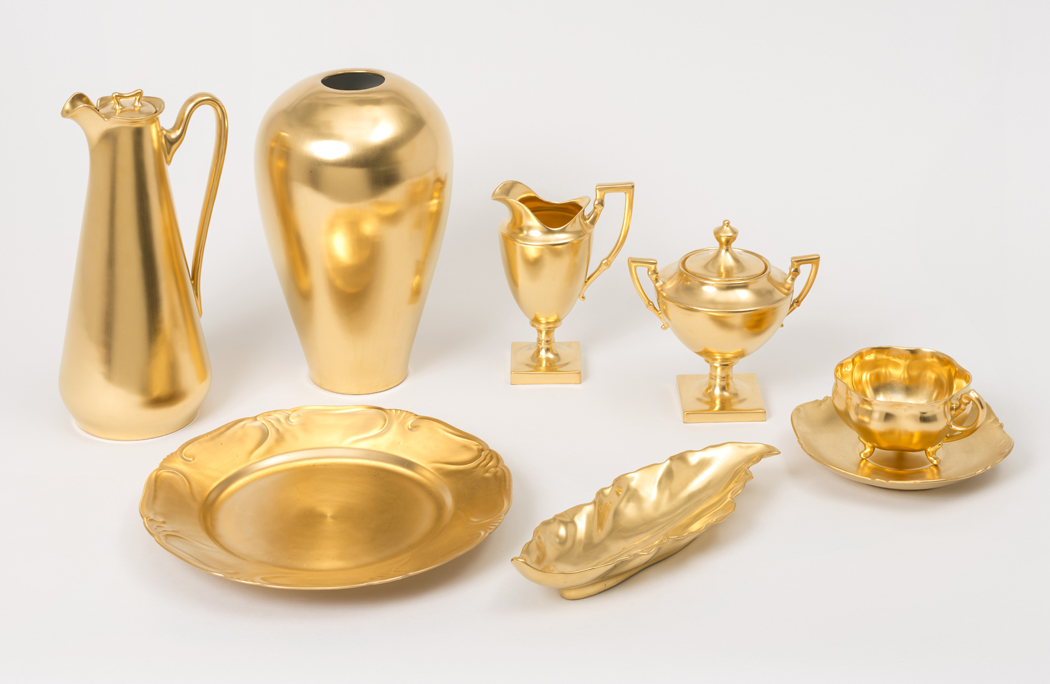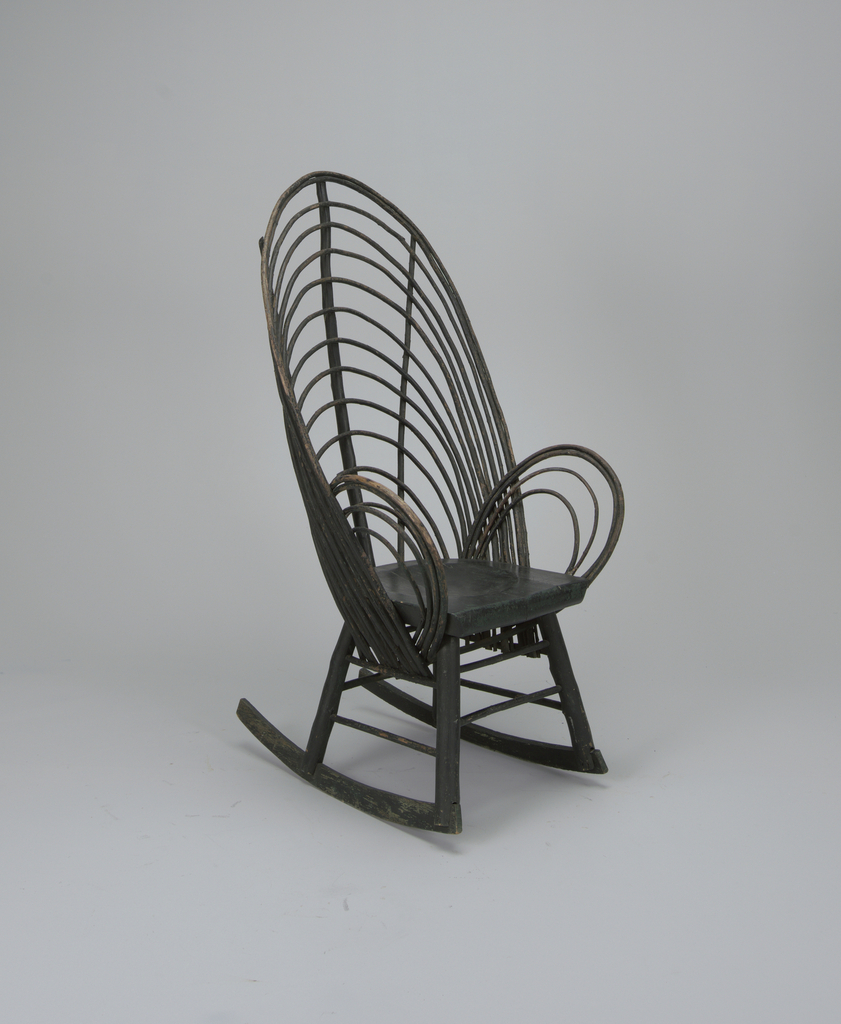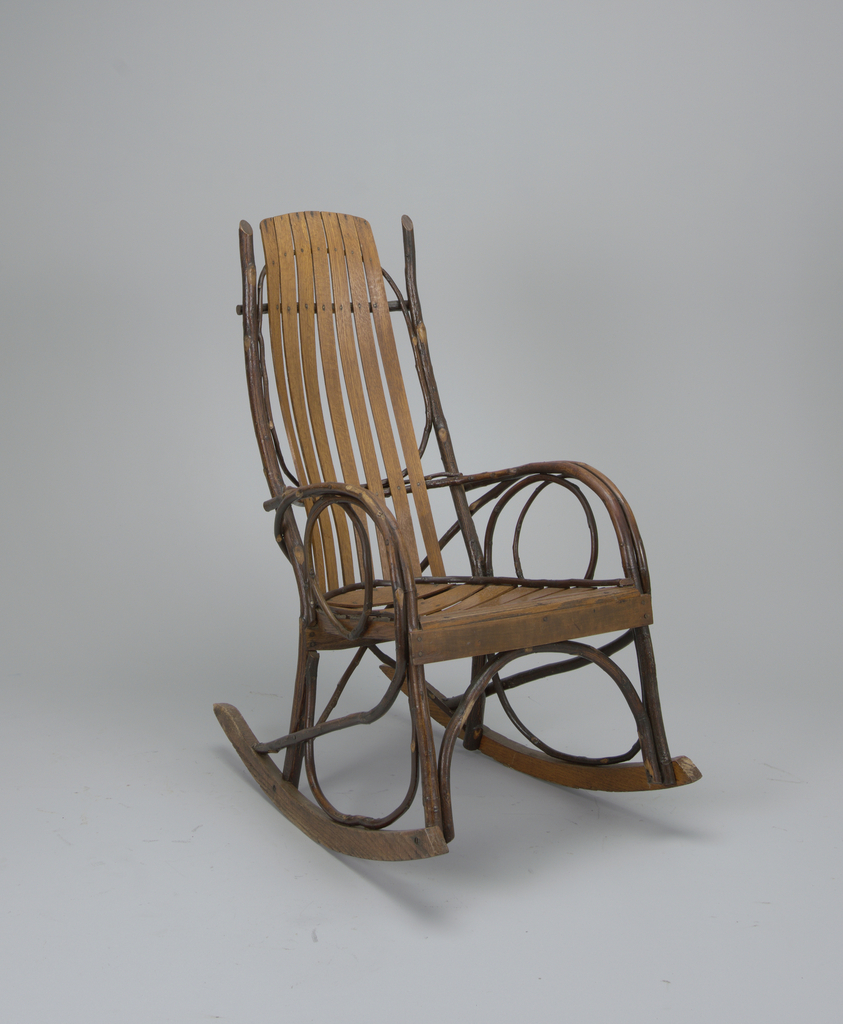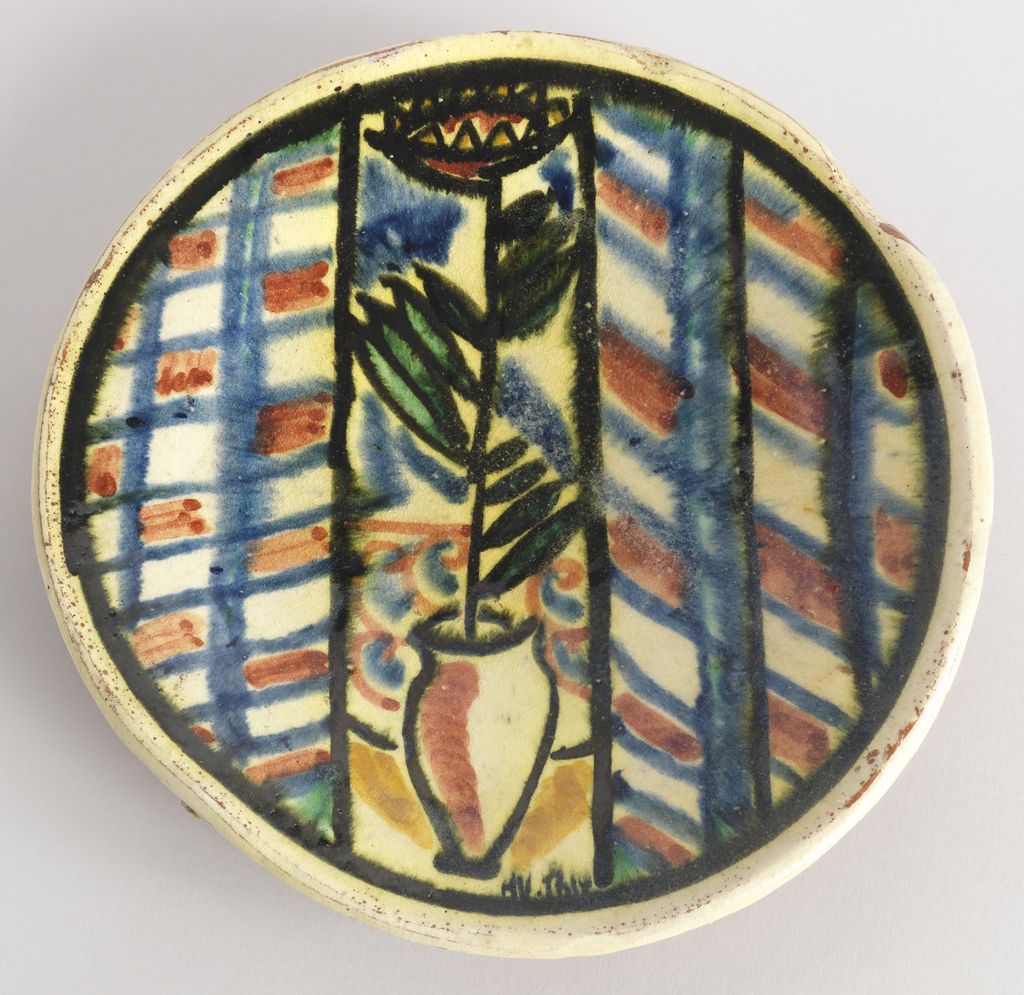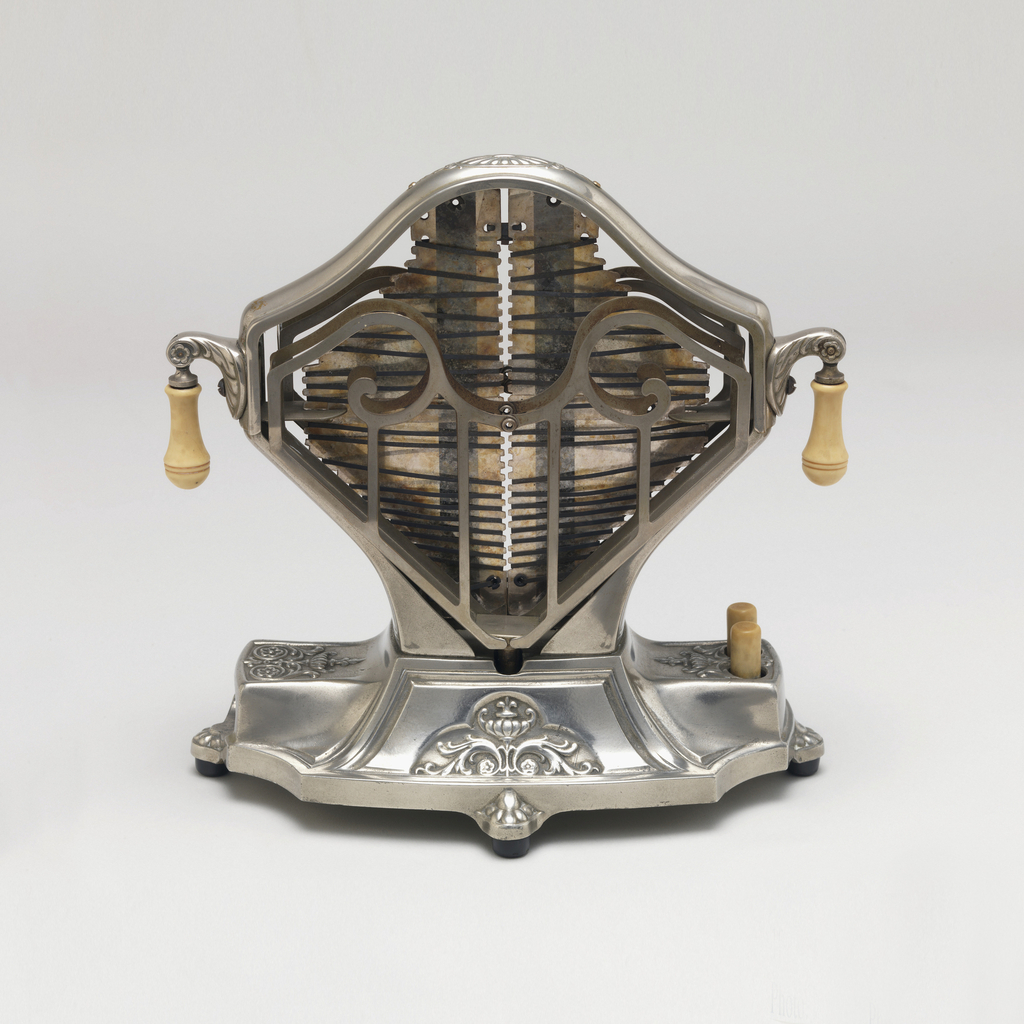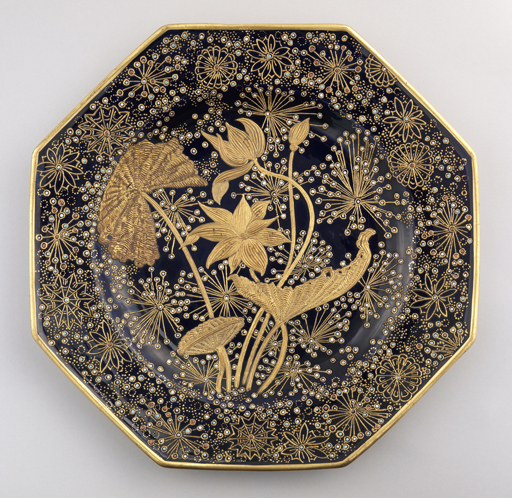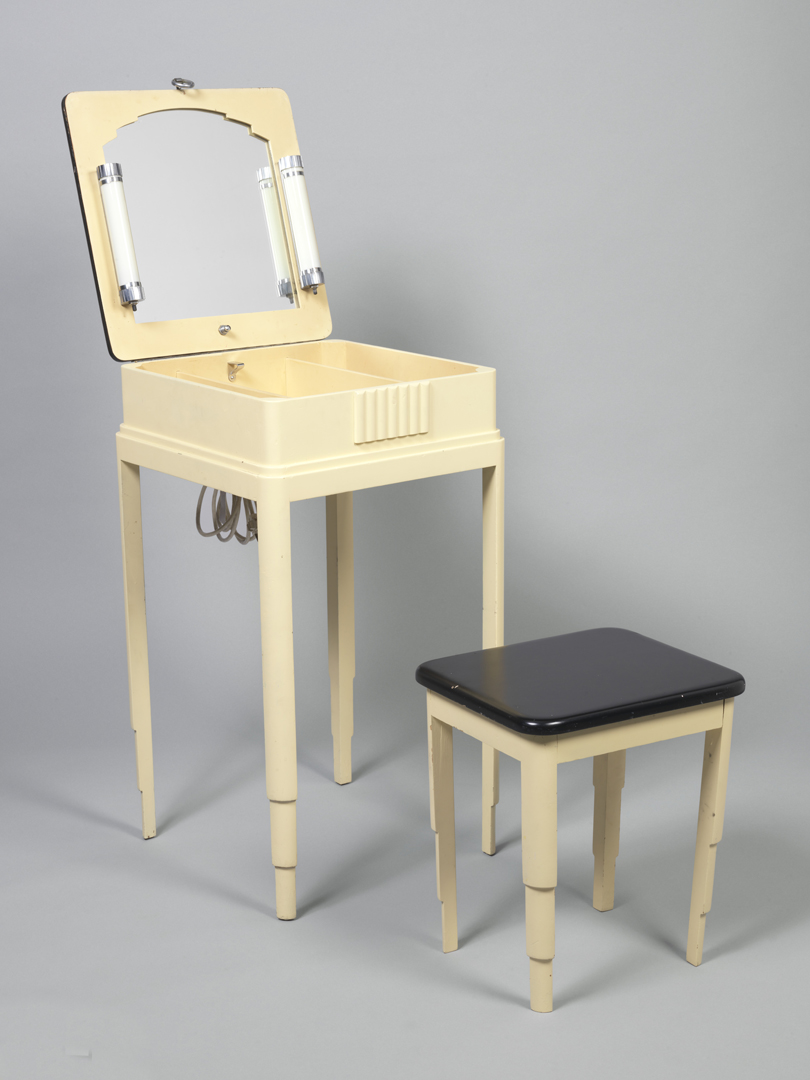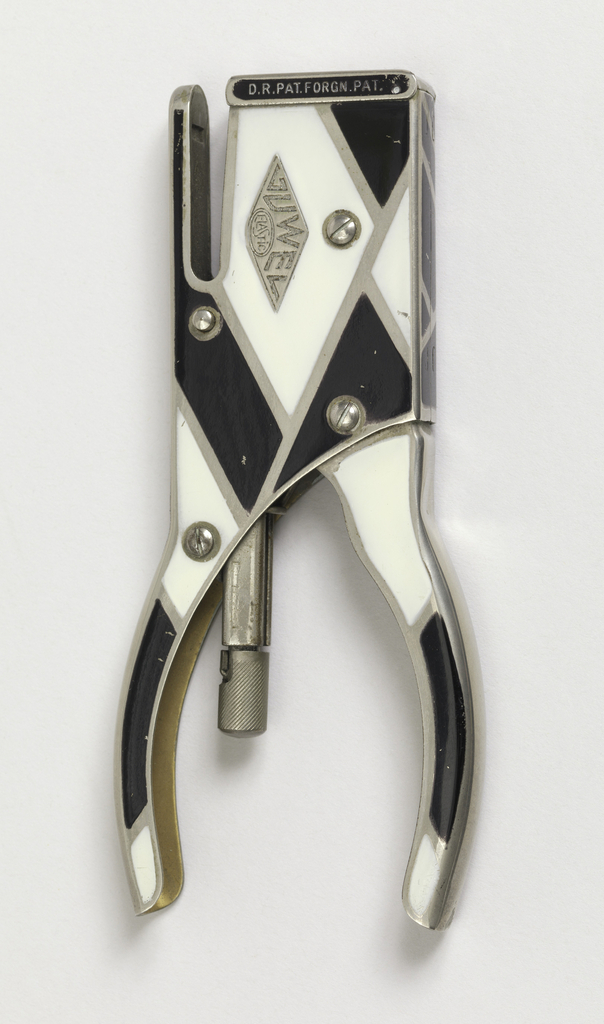In the early 1890s science teacher Emily Healey was working in her laboratory in Washington D.C. when she accidently dropped a certain uranium salt into some heavy oil. When she fired this compound onto a scrap of china, the effect was a brilliantly colored surface. Many experiments with the uranium followed and Emily determined that...
This chair was made in about 1900 in Catskill, New York, the region that inspired some of America’s greatest landscape painting. In the nineteenth century, artists, writers, and tourists travelled to the Catskills in awe of the falls, mountains, and landscape views, which Frederick Church among others so famously depicted. The rapid development of the...
This rocking chair was made in Indiana, where Amish first settled in the 1840s, and boasts hickory twigs bent to form its symmetrical sides and oak slats evenly arranged to form its seat. The dramatic contours of this chair ensure that it is at once attractive and comfortable. This graceful form is achieved by bending...
Upon his return from military service in Europe in 1919, Henry Varnum Poor settled in an artists’ community in New City, New York where he purchased land and began single-handedly building a home called Crow House, named after the local birds who kept him company while he worked. As a struggling painter Poor was always...
Landers Frary & Clark was one of the first American companies to manufacture electrical home appliances: in 1908 they introduced an electric coffee percolator and 1912 saw the release of an electric iron. These new products added to the company’s line of household products that they had marketed since the 1890s under the trade name...
In the last quarter of the nineteenth century the Greenpoint neighborhood of Brooklyn was a hub for ceramic production and home to at least a dozen major firms. The beaches of the East River offered plentiful white sand and underdeveloped land near the shore accommodated the building of large factories. These firms produced a broad...
Lurelle Guild was a prolific industrial designer, producing useful and beautiful objects that modernized the American home spanning from vacuum cleaners to canapé plates. Guild’s usual method was to invent or develop the new product, patent it, and then assign the patent to the manufacturer, charging a fee and royalties. In 1933 and 1934 he...
The design for this stapler was patented in the United States in 1934 by Fridolin Polzer who was at the time working for E.H. Hotchkiss Company, a leading manufacturer of stapling machines, based in Norwalk, Connecticut. In Japanese, the word for “stapler” is “hotchikisu” after the E.H. Hotchkiss Company, which first shipped staplers to Japan...
